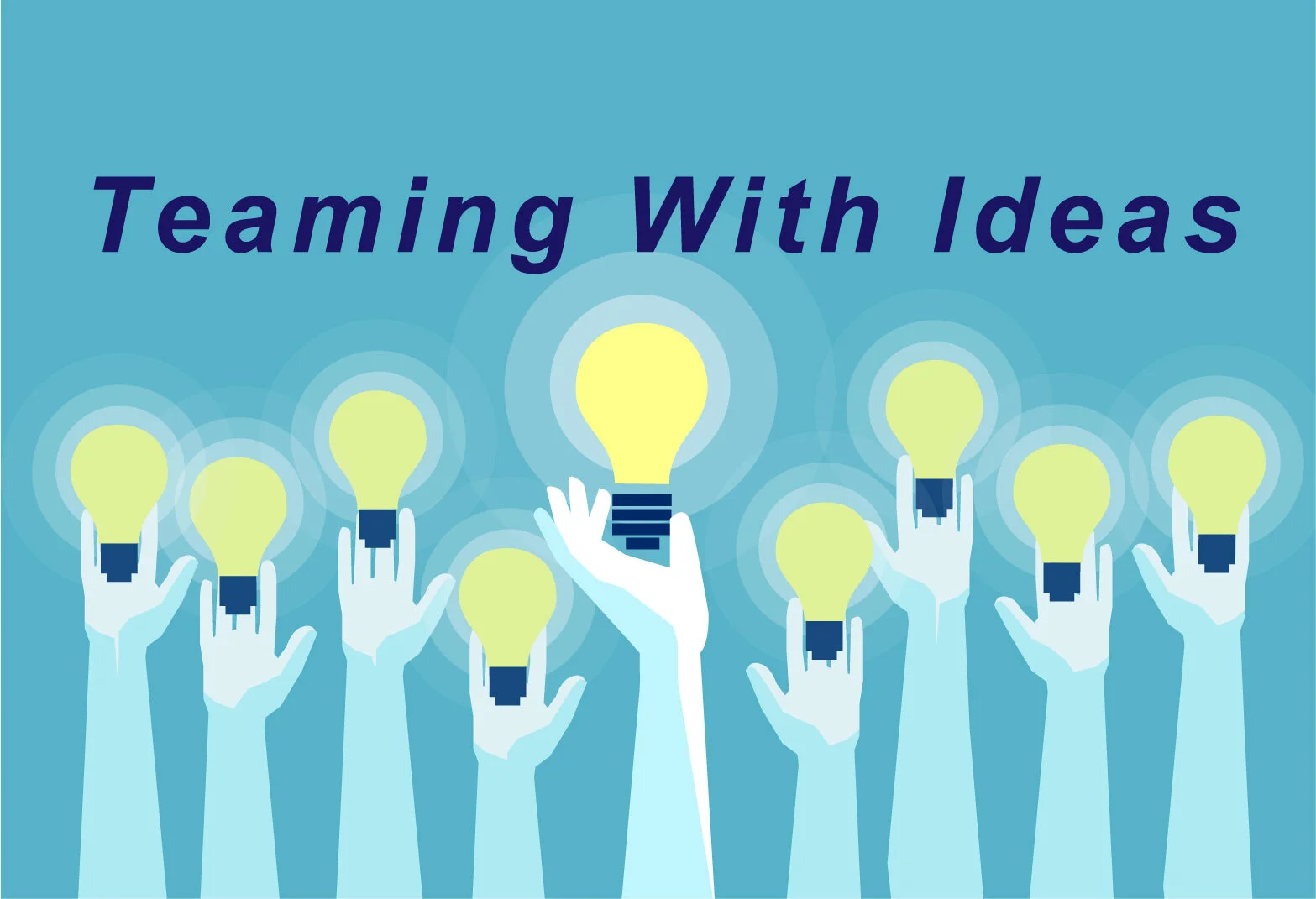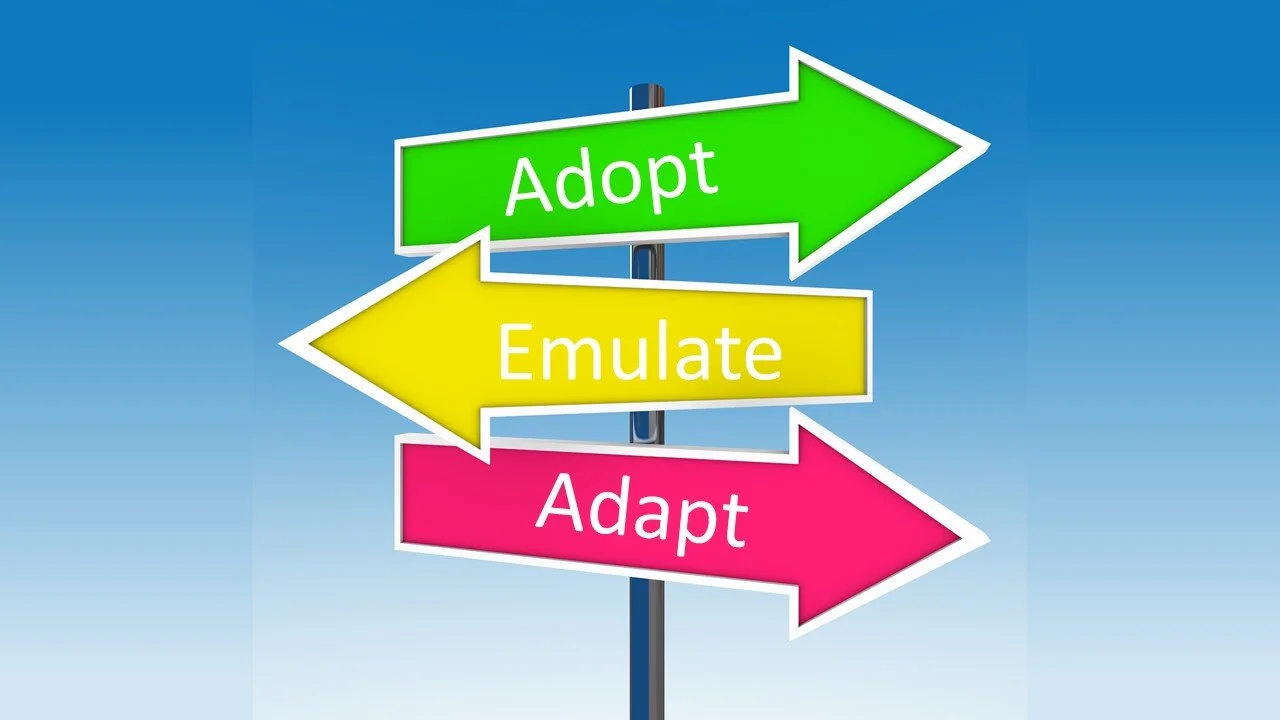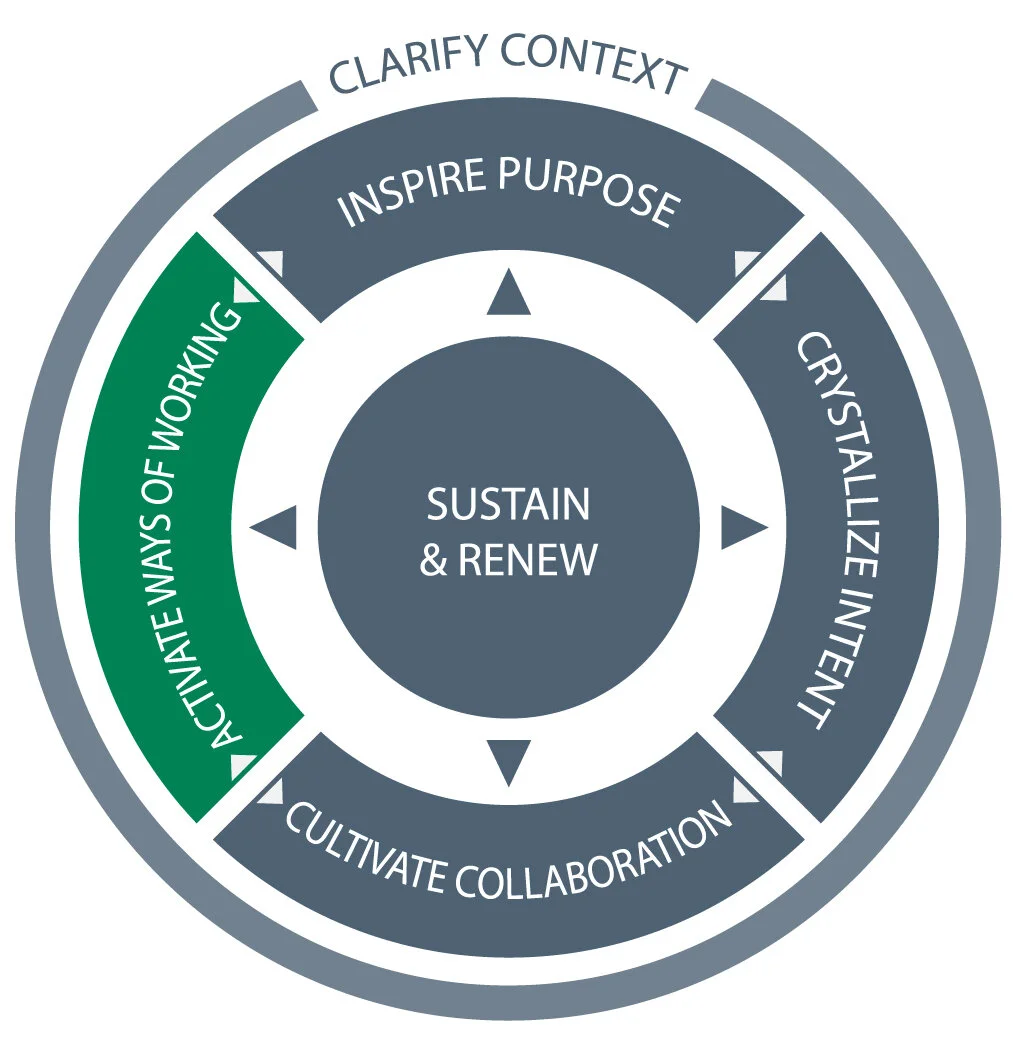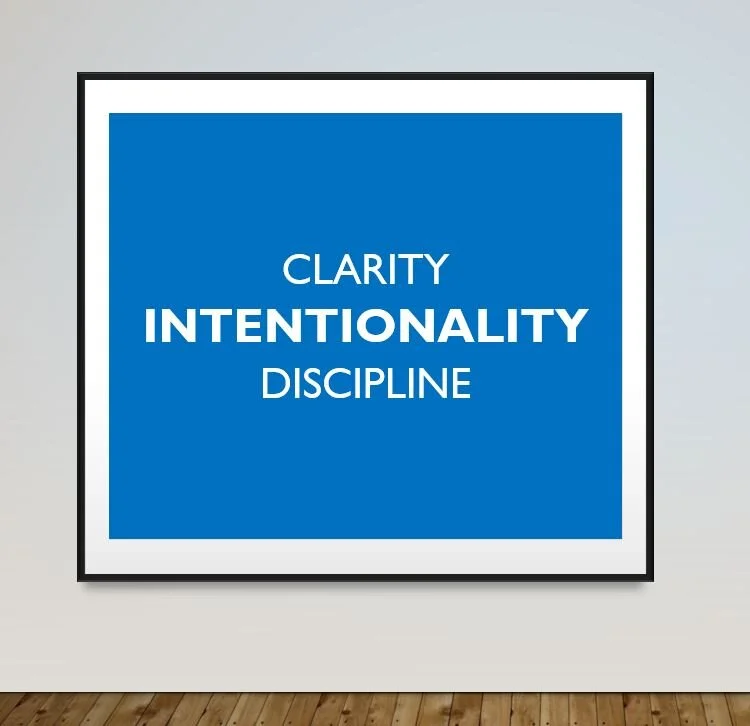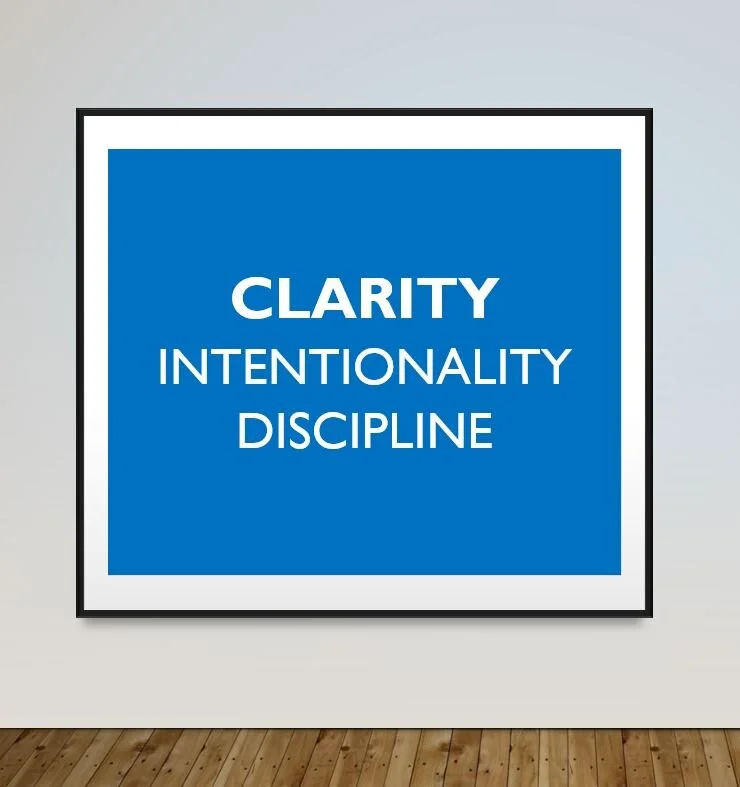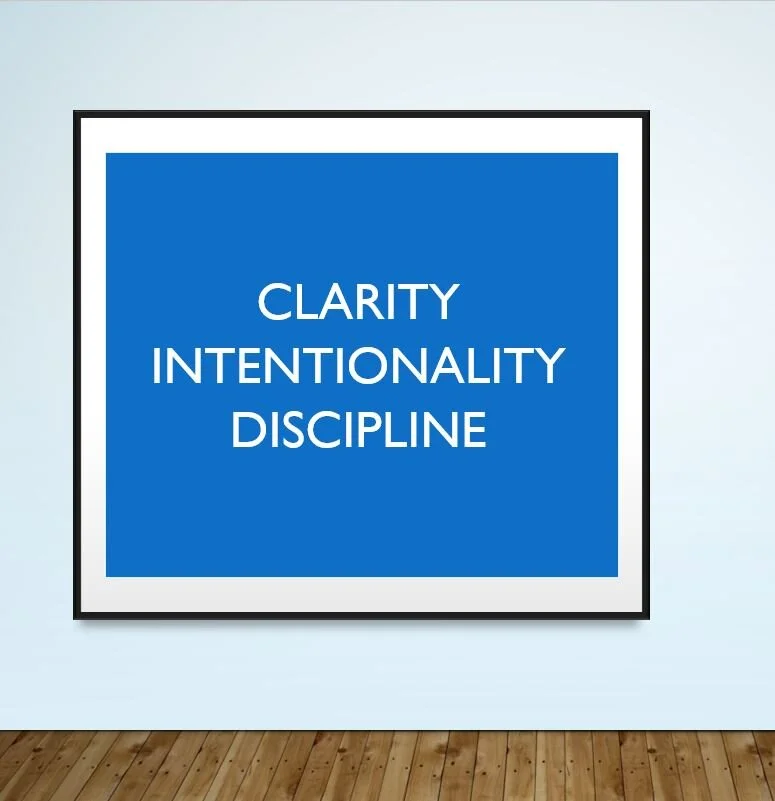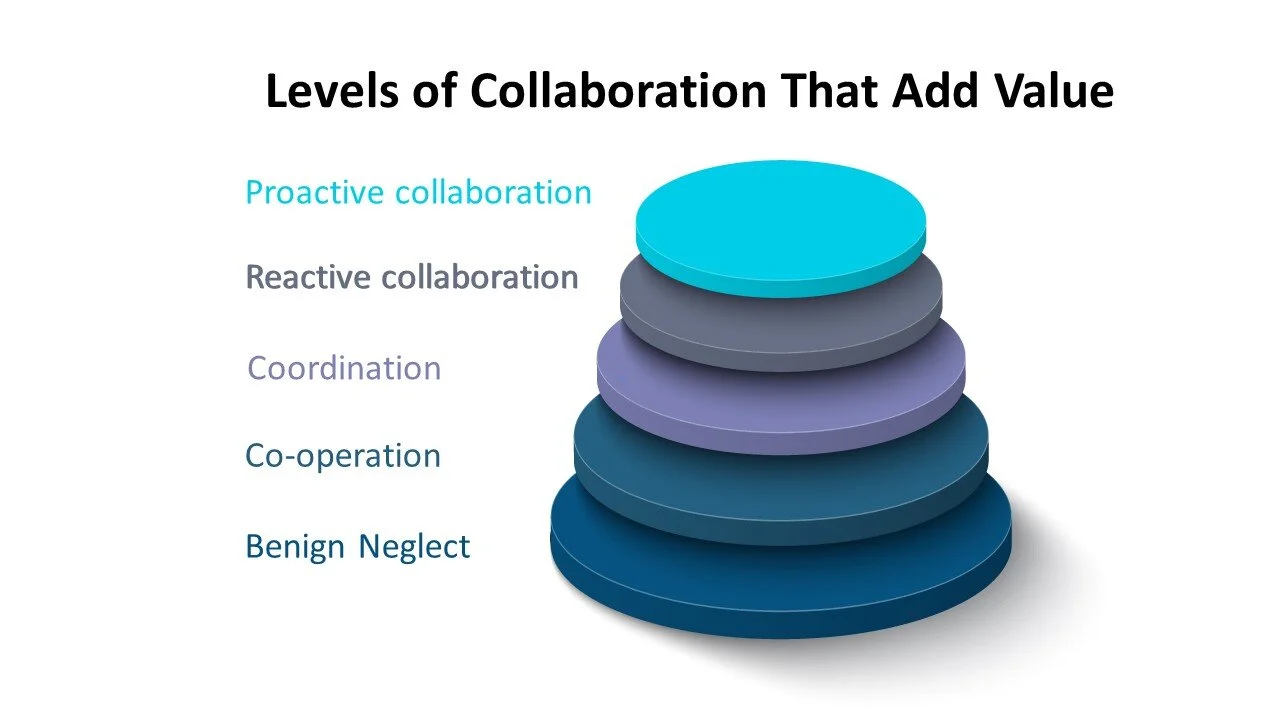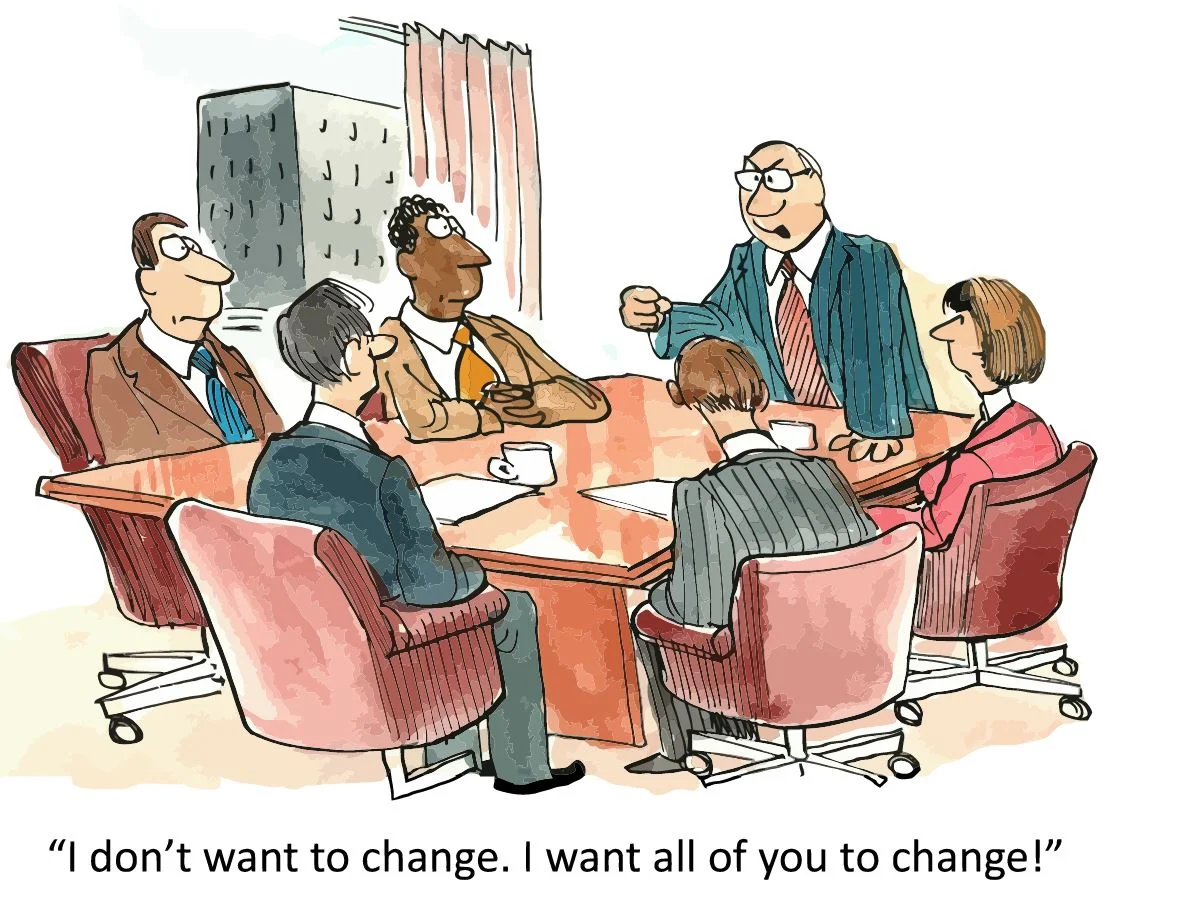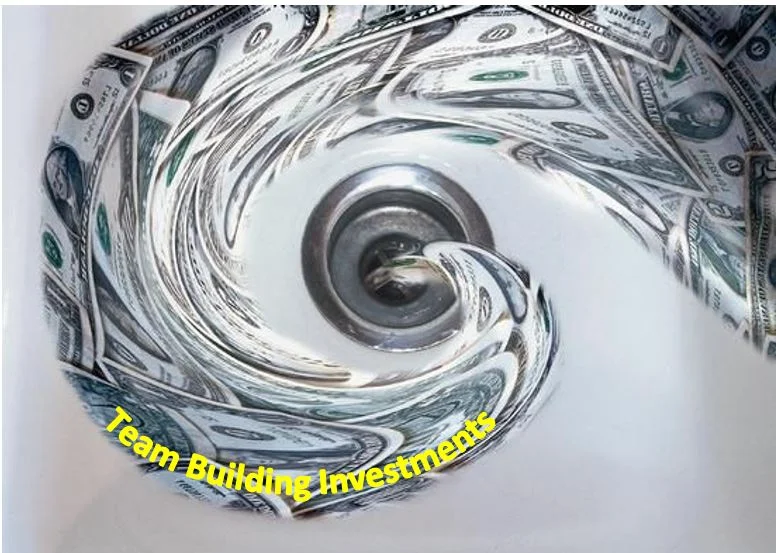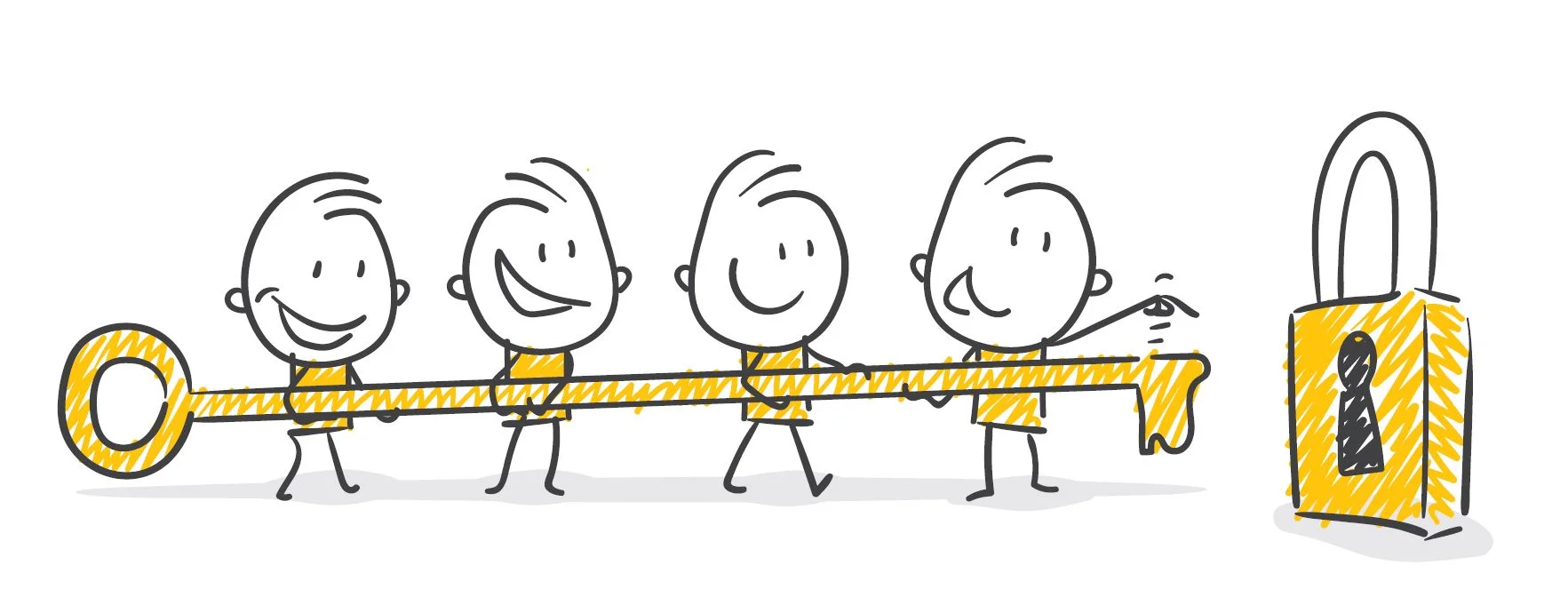When we can connect with others around meaningful work and produce better results that we can all be proud of, that’s just good for everybody. That’s why I do this work, that’s why we need to start this quiet revolution. The invitation is open. Join me, won’t you?
Read MoreThere is a presumption that you have to build trust to create a great team. I see it differently. Trust is not a necessary precursor for effective teamwork. Trust is an outcome of people collaborating on meaningful work. Read this to find out more.
Read MoreThe key to this High Performance Collaboration framework is the insights and theories that lie behind it. The name of the Imperatives and Practices are just labels; we encourage you to adapt this Framework to your organization and culture.
Read MoreActivate ways-of-working is how you make sure your meetings are built around what matters to everyone on the team.
Every month or every quarter commit to stop, inquire, reflect and improve. Connect your learning sessions to specific areas that you want to enhance, even to specific on-going work that could benefit from the lessons learned. That’s the heart of Sustain & Renew as a discipline.
Read MoreYou come to this third Practice knowing why your collaboration matters, which work requires collaboration, and who should be doing it. Cultivate Collaboration is the payoff for all that work. It is about contracting, connecting individuals to the work of the team. Cultivate Collaboration is about creating more intentional collaboration. In fact, it’s the only Practice that is directly aligned to Intentionality.
Read More“TOGETHER WE ARE COURAGEOUS ARCHITECTS OF THE FUTURE OF PETCARE”.
This statement is not only inspirational and aspirational, it’s also practical. For example, if a topic didn’t deal with the future of the entire petcare segment, if it wouldn’t make a difference to what the segment might look like 5 or 10 years ahead, that topic wouldn’t make it onto their agenda.
Read More…As accurate as it was, descriptions of team needs weren’t going help people who just wanted to know what work had to get done, and how they ought to go about it. So, I wondered, “How could I augment Three Imperatives so we would have something teams could use to generate collaboration and teamwork?” They needed the actual Practices to . Allow me to describe the six practices and how they align with the three imperatives.
Read MoreThe world’s crazy enough. Whatever we can do within our teams to foster a sense of control, a sense of focus around the things that matter, will go a long way towards helping us meet the commitments we have made to each other and to our organizations.
Read MoreCollaborative accountability goes beyond the tasks people do together; it includes commitments for how they intend to work together, the behaviors they are signing up for. Intentionality is the ultimate virtue of superior teamwork.
Read MoreWithout clarity we waste time in meetings we don’t need to be part of, listening to stuff we don’t need to hear. What’s worth meeting about and engaging around? It’s that simple.
Read MoreWhat I learned through my research was that my well-intended alignment efforts weren’t helping collaboration. It wasn’t just about shared goals, I realized. To get more intentional collaboration, teams needed alignment. Then the Three Imperatives of Effective Collaboration emerged.
Read MoreNeither “Real Team” nor size nor description of your team or group matters. Whether you’re called a council, a committee, or a board the same thinking about units of collaboration applies. Focus on the work needing collaboration and get on with it.
Read MoreThe levels idea had its genesis when I was working with a group of senior Mars HR folks in Europe. I wanted to see how people spoke about the ways they were working together. I looked at the data I’d gathered while and a pattern emerged. I organized my insights into what I now label the Levels of Collaboration. Here’s how to use the Levels to create value for your team.
Read MoreTeam dysfunction? Spoiler alert: The manager is always the problem.
Read MoreTypical team building can be fun. If nothing else it offers a break from the same-old, same-old back at the office or factory. But fostering “teaminess”, that shallow, short-lived version of team spirit, will not make your team better. If you want a stronger team work together on things that matter.
Read MoreTuckman’s Stages of Team Development may be useful for psychologically analyzing conflict, but not for helping a team get things done.. His stages are based on research that is no longer relevant, especially in the workplace. What’s more helpful: “What are we going to do?” or “What stage are we in?”
Read MoreOne startling discovery was that relationship building, despite all the time and money teams and organizations devote to it, doesn’t ignite collaboration
Read MoreHow can we clearly differentiate among the varying degrees of collaboration? And how can we apply that knowledge to getting work done collaboratively? This Blogpost addresses:
The risk of burn out from what some are calling over-collaboration
Understanding that there are levels or degrees of collaboration leads to finding you need less collaboration that you thought.
How understanding these levels help you decide how to dedicate more time to the collaboration that matters and less time to the collaboration that doesn’t
Gets you to fewer meetings, fewer random emails or texts in the middle of the night
There’s a common fallacy that shared goals is how you do that. Goals motivate people, right? So shouldn’t it make sense that goals would do the same for people collaborating? I learned at Mars that it’s not so. Goals matter, but they don’t motivate collaboration.
Read MoreWe decided to tap into people’s motivational wiring in an unexpected way to get the opposite of what they normally preferred. Once we embraced this mind hack, we were able to build the framework and tools that did just this and enabled teams to get consistently better results.
Read More